

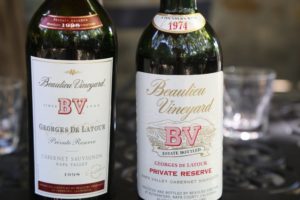 Beaulieu Vineyard (pronounced like bowl-you). This historically prominent and iconic winery is located on the corner of Rutherford Cross Road and Highway 29 in the small town of Rutherford. This is several miles south of St. Helena on the “wine strip” where some of Napa’s most visited and venerable wineries are located. This site is home to both Beaulieu Vineyard’s General and Reserve tasting rooms, their impressive and sizable production facility and the seemingly always busy neighboring Rutherford Grill. A large parking lots wraps around the back of the property – either accessed directly from Highway 29 or from Rutherford Cross Road (anchored on the east side by the well-regarded Rancho Caymus Inn).
Beaulieu Vineyard (pronounced like bowl-you). This historically prominent and iconic winery is located on the corner of Rutherford Cross Road and Highway 29 in the small town of Rutherford. This is several miles south of St. Helena on the “wine strip” where some of Napa’s most visited and venerable wineries are located. This site is home to both Beaulieu Vineyard’s General and Reserve tasting rooms, their impressive and sizable production facility and the seemingly always busy neighboring Rutherford Grill. A large parking lots wraps around the back of the property – either accessed directly from Highway 29 or from Rutherford Cross Road (anchored on the east side by the well-regarded Rancho Caymus Inn).
Georges de Latour was a chemist from France’s Dordogne region who moved to California in 1883, later settling in San Jose in the early 1890s. He ran a cream of tartar business – scraping off potassium tartrate crystals from the inside of wine casks following their use in local wineries – and processed these to be used in baking powder. He moved to Healdsburg (Sonoma County) after neighbors complained of the smell from his factory – and established another similar business for a short while, before he and his wife Fernande moved to the Napa Valley in 1900. The site of the winery that was owned by French American Tartar and managed by de Latour is now home to Holdredge Cellars at 51 Front Street.
The roots of Beaulieu Vineyard were 4 acres of land that Georges purchased in Rutherford right next to the already established Inglenook Estate and began yet another cream of tartar business. His contact in the Napa Valley was John Wheeler (part of the family that established Wheeler Farms in Rutherford) who he had done business with, in the past.
Over the ensuing years the de Latours purchased much larger nearby properties in Rutherford including BV Ranch #1, BV Ranch #2 and immediately following Prohibition, the purchase completion of BV Ranch #3. Incidentally, this practice of naming subsequent vineyard purchases by number has continued through more present day with vineyard numbers up to #12. Prohibition was the last nail to be hammered into the metaphorical coffin for most wineries in the United States. Not so with Beaulieu Vineyard, rather they thrived during this trying time in the wine industry as they had a national contract with the Catholic Church for producing Sacramental wine – with wines made for church use dating back to the 1908 vintage. And they continued to produce altar wines for nationwide use until 1978.
Like with numerous wineries/producers in the Napa Valley, published founding dates do not always equate with first vintages. According to wine historian, Charles Sullivan, in his book, Napa Wine, A History, the first wines Beaulieu Vineyard produced were in 1904 but not yet bottled under Beaulieu Vineyard and were made in Thomann Winery in St. Helena (which two years later would become Sutter Home Winery). The first wines produced were bulk wines purchased from Wente Vineyards in Livermore and resold (a negociant model which still very much exists in the wine world). They were also making wines for distilling and lesser amounts for the Catholic Church. At one point during Prohibition, for legal purposes, Wente Vineyards actually transferred over their winery bond to Beaulieu Vineyard.
Perhaps related, perhaps not, but here nonetheless is Latour Way in Livermore. And in a clear homage to Napa Valley are a number of small streets named after towns including Calistoga, St. Helena, Oakville and Rutherford.
French American Tartar building, Healdsburg
Wente Vineyards
Wente Golf Course
Livermore Street Signs in Homage to Napa Valley
For two years starting in 1909, Beaulieu Vineyard leased the old Henry H. Harris Winery for additional cellar storage (built in 1887 and now home to Martin Estate Winery). One of the old-time names in the valley since the 1850s, Stice (reference Stice lane) Henry Stice was hired as the winemaker in 1909 – essentially their first ever winemaker. This is where the first wines bottled under the Beaulieu Vineyard were produced and then aged in an old barn on their original 4-acre property across the highway to the west from their present location. In addition to still wines, Beaulieu Vineyard was also producing dessert wines and ‘sparkling’ wines with the bubbles introduced from a carbonation machine.
Phyloxxera had begun destroying vineyards in the Napa Valley beginning in the 1870s and continued attacking nonresistant rootstocks for several more decades. By 1909 de Latour established a sizable nursery business supplying various grafted phyloxxera resistant vines to vineyards in both Napa and Sonoma counties. His nursery was a major reason the Napa Valley was able to replant and eventually recover from phylloxera (until the next outbreak hit in the 1980s).
The first vintage of wine made on site at Beaulieu Vineyard was in the old barn in 1911. A new winery was built on property, functional in time for the 1916 vintage. Emboldened from actually making a profit during Prohibition, wanting to expand and perhaps sensing Prohibition might eventually end, the Latour’s purchased the old Seneca Ewer Winery in 1923 (founded by State Senator Seneca Ewer in 1885). Ewer came to California in pursuit of gold mining riches; eventually he settled in Oroville and began practicing law and soon became a Judge in Butte County. Along with his family, he moved to the Napa Valley in 1870 setting in St. Helena and building a home just north of town above the highway on the property that later was home to the St. Gothard Tavern, Las Alcobas resort and currently the Hyatt managed, Alila Napa Valley. Ewer was a prominent citizen in St. Helena having served as president of the St. Helena Water Company and directors of several banks including the Bank of St. Helena which eventually became part of the Bank of Italy (the precursor to Bank of America).
The stone Seneca Ewer Winery building was completed in 1885 located across the highway from the original Beaulieu Vineyard location – and is still the current home of the Beaulieu Vineyard physical winery (although many changes and expansions have occurred over the decades).
It is really remarkable that de Latour had the entrepreneurial fortitude, vision and creativity to take full advantage and be financially successful during two extremely challenging times in the wine industry – the advent of phylloxera and Prohibition.

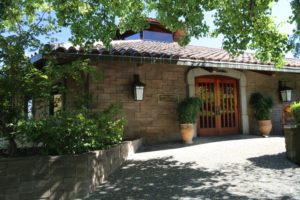
 Seneca Ewer Winery was designed by noted winery designer Hamden McIntyre who was in part responsible for the Greystone building (currently occupied by the Culinary Institute of America), Eschol Winery, (now owned by Trefethen Family Vineyards) and the Niebaum Estate. Hamden was the Howard Backen of the times – Howard was a well-respected contemporary architect responsible for some of Napa,s most creative and innovative wineries (died 2024).
Seneca Ewer Winery was designed by noted winery designer Hamden McIntyre who was in part responsible for the Greystone building (currently occupied by the Culinary Institute of America), Eschol Winery, (now owned by Trefethen Family Vineyards) and the Niebaum Estate. Hamden was the Howard Backen of the times – Howard was a well-respected contemporary architect responsible for some of Napa,s most creative and innovative wineries (died 2024).
The winery takes its name from what Fernande said when she initially viewed their first property, “quel beau lieu” which in French means “beautiful place” – she continued to refer to the property as ‘beau lieu’. If only she had merely said “bien” meaning “good” in English, then maybe they would have taken a different name and we could pronounce the name easier. However just do like the locals and call it BV for short.
Georges died in 1940 – for 11 more years Fernande oversaw the winery operations. After she died, the winery was transferred to her daughter Madame Hélène de Pins and her husband, Marquis. Beaulieu wines have performed very well at numerous tastings and events over the decades including at a a special tasting conducted by French vintners and wine connoisseurs at the George V Hotel in Paris in 1949 – nearly 30 years prior to the Paris Tasting of 1976. Fernande submitted 12 wines to this tasting.
Some 50 tasters were present including those representing the French Ministry of agriculture, several viticultural associations, schools of enology, the Society du Tastevin, editors of various French wine journals, owners of some of France’s best chateaus, hotel and restaurant owners and members of the U.S. embassy staff. Those in attendance unanimously agreed that the Beaulieu wines were of the finest quality.
Now owned by the Four Seasons, the George V Hotel is one of Paris’s premier hotels. It is known for its wine cellar containing nearly 50,000 bottles with one wine dating back to 1795. The hotel employees some 15 sommeliers. Its location is in a former limestone quarry; its rocks were used to build the Arc de Triomphe.
In 1959 the film, The Earth is Mine staring Rock Hudson was in part filmed at Beaulieu Vineyard (among other Napa Valley locations including La Perla Estate on Spring Mountain). This film was based on the 1942 book The Cup and the Sword by Alice Tisdale Hobart.
By 1969 the Madame sold the winery to Hueblein, Inc., (incidentally the same year that Heublein also purchased their historic neighbor, Inglenook Vineyards). While the family sold Beaulieu Vineyard, they held on to other vineyard property in Rutherford including their original property – what is now called the Beaulieu Garden (still owned by family heirs).
Today Beaulieu Garden is selectively used as a gorgeous wedding site. We have visited the property several times; it feels magical – an escape to another time. The driveway is long and lined with Sycamore trees leading to gardens with a European feel. The surrounding vineyards are highly pedigreed. But perhaps more intriguing is the “Champagne” Cellar built in 1915 and used until 1991 to produce Beaulieu Vineyard bottled Champagne (sparkling wines). This cellar still exists and in 2017 was converted into a private wine storage facility for clients known as the Rutherford Wine Vault (some of whom store very old vintages of Beaulieu Vineyard wines).
Beaulieu Vineyard has seen a number of ownership changes since the de Latours; today it is owned by Treasury Wine Estates. As of 2018 according to Wine Business Magazine, Treasury Wine Estates farms the most vineyard acres of any entity in the entire Napa Valley – some 3400+ acres, the majority of these vines are leased rather than owned.
And over the decades Beaulieu Vineyard has attracted numerous celebrities including politicians and artists. Famous personalities such as Eleanor Roosevelt, Winston Churchill, Admiral C.W. Nimitz, Herbert Hoover, John Foster Dulles, Maurice Chevalier, Edith Piaf, Rock Hudson, Rothschild and Rockefeller family members, Prince Faisal Al-Saud, and Prince and Princess Rainier Grimaldi of Monaco have all visited the winery.
And in 1952 and 1953 Edward Montagu of the well-known automobile family in the U.K. traveled to the U.S. to help publicize the opening of his grand Beaulieu Estate to the public; one of his stops was a visit to Beaulieu Vineyard. Presumably he would have met with Madame Hélène de Pins and her husband, Marquis, and or winemaker André Tchelistcheff. Little did he know that his grandnephew Weston would begin producing wine in Napa Valley some approximately 60 years later under the labels Montagu and Silver Ghost.
Wine historian Lynn Downey was tasked with the role of cataloguing and curating boxes and boxes of Beaulieu Vineyard history. Some nearly 200 boxes of records, documents photographs and other information were ultimately compiled. And in 2022 she curated a rich oral history of Beaulieu Vineyard through the BV Vines & Stories series. These interviews were primarily with former Beaulieu Vineyard employees including winemakers, some of which can be heard at the end of this review.
André Tchelistcheff

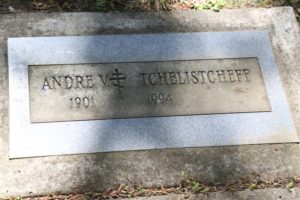
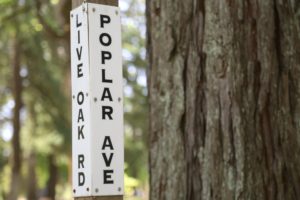 In the back of the courtyard next to the Reserve Tasting Room stands an imposing statue of André Tchelistcheff (last name pronounced Chelischev, the T is silent) sculpted by artist William Behrends, whose height was diminutive in real life, only about 5 feet tall. Arguably André was one of Napa Valley’s most influential and well-respected winemakers. Born in Moscow in 1901 he was the son of Russia’s Chief Justice of the Moscow Court of Appeals and the godson of Prince Lev Golitsyn (also a winery owner at one point on the Crimean Peninsula – Ukraine). André’s family fled the Russian Revolution of 1917 to Kiev. Later André joined the White Army and fought in the Russian Civil War on the Crimean Peninsula. At one point his unit came under machine gun fire – André was left for dead and his father even held a funeral for him.
In the back of the courtyard next to the Reserve Tasting Room stands an imposing statue of André Tchelistcheff (last name pronounced Chelischev, the T is silent) sculpted by artist William Behrends, whose height was diminutive in real life, only about 5 feet tall. Arguably André was one of Napa Valley’s most influential and well-respected winemakers. Born in Moscow in 1901 he was the son of Russia’s Chief Justice of the Moscow Court of Appeals and the godson of Prince Lev Golitsyn (also a winery owner at one point on the Crimean Peninsula – Ukraine). André’s family fled the Russian Revolution of 1917 to Kiev. Later André joined the White Army and fought in the Russian Civil War on the Crimean Peninsula. At one point his unit came under machine gun fire – André was left for dead and his father even held a funeral for him.
Eventually his family moved to France where he met Georges De Latour in Paris – who was in France looking for a new winemaker for Beaulieu Vineyard to succeed his consulting enologist Leon Bonnet (Emeritus Professor at University of California, Berkele) who retired in 1937. It was Leon who recommended de Latour meet Tchelistcheff. After meeting, André agreed to come to the Napa Valley and arrived at age 37 in 1938 picked up in San Francisco by Georges De LaTour himself and his driver Luis in an impressive 1925 Cadillac Imperial Touring car. The car was passed on to an employee who used it for farm work until sometime in the 1950s and later for hunting rabbits in the vineyards and also deer.
Eventually it somehow ended up being stored in a barn under a tarp – where Henry “chops” Ghiringhelli discovered it after purchasing a ranch just south of Rutherford. At that time, it was in bad shape, dusty and beaten from its later years of hard work. It was painstakingly restored after about 1400 hours of work. The interior is impeccable – a window completely separates the passengers from the driver. Communication is through a microphone connected to a speaker enabling the passengers to speak with the driver when they wish. And creatively, the rear-view mirror is bucked via a leather strap to one of the spare tires. The car is currently housed within the old winery until it can be displayed to the public. There are only a handful of these particular cars left on the planet.
It was André’s wine making knowledge and expertise that helped perfect their wines including their Pinot Noir. He stayed with Beaulieu Vineyard for some 35 years before retiring in 1973 (during that time he also operated his own private lab – the Napa Valley Enological Research Laboratory and Napa Valley Enological Center – on the second floor in the historic Richie Building in downtown St. Helena from 1947 through 1962). Some of his prominent winemaker clients including John Daniel of Inglenook Vineyard, Louis P. Martini and Lee Stewart of Souverain. Andre’s career didn’t end after he retired from Beaulieu Vineyard – he continued to significantly contribute to the local wine industry as a winemaker and soils expert and his advice was followed by numerous Napa winemakers and vineyard owners (often in the form of planting varieties that André recommended).
He returned to Beaulieu Vineyard in a limited capacity in the early 1990s working with then winemaker Joel Aiken. Joel told us about the time that André visited Beaulieu Vineyard at age 89 in 1990. The winemaking team was proudly showing him the winery and traditional winemaking practices (including older American oak barrels) that in part André setup back when he was working at the winery. André remarked, something like, “it has been 17 years since I have worked here, I have changed, why haven’t you”.
Some old-time vintners we have spoken to fondly remember André stopping by in his blue Corvette to chat – always with a cigarette in hand. As of our last update to this review, André’s wife Dorothy lived in the city of Napa until she passed away at age 99 on Thanksgiving day in 2023.
While at Beaulieu Vineyard, it is impressive to note that André was able to develop world class wines with limited resources. André oversaw several innovations introduced while working at Beaulieu Vineyard including inoculating wine to begin malolactic fermentation and using micro filtration to remove yeasts and any bacteria prior to bottling.He is still referred to by some former elderly employees as “the Maestro”. His son Dimitri (died 2017) was also an accomplished winemaker providing his services in Mexico, Hawaii and in the Napa Valley and also consulting for Beaulieu Vineyard (especially during the 1980s). And André’s nephew Alex Golitzin co-founded one of Washington’s top wineries Quilceda Creek along with his wife Jeannette.
Long time Napa vintner and founder of Stag’s Leap Wine Cellars, Warren Winiarski had this to say about André (from an interview Warren did for the Bancroft Library at UC Berkeley), “He was a unique combination. He provided, in his own soul, this extraordinary combination of science and poetry. That’s what it takes in this kind of thing. He was uniquely and surpassingly, perhaps, gifted with this combination of those two aspects at a very high level.” His influence was an integral part of Beaulieu’s history.
André also was fluent in seven different languages including Russian, Greek, Latin, German, French, Italian, and English and according to Mike Grgich in his autobiography, A Glass Full Of Miracles, spoke perfect Croatian.
André’s Secret Storage Room
And in a part of the old winery (now since torn down), not far from his own office and the lab was a very tiny broom/coat closet. To the unsuspecting employee, this was simply just a small storage space. But to a very privileged few over the decades, a set which only included each primary Beaulieu Vineyard winemaker who was always sworn to secrecy by the previous winemaker, this was much more than a broom closet.
In the 1950s unbeknownst to anyone else (perhaps not even André’s wife Dorothy) André began to stow away bottles of Georges de La Tour wines using this broom closet as a secret entrance to what is now referred to as Andre’s Tower.

 André would open the ‘back wall’ of the closet, a secret door which exposed a series of steep wooden stairs leading into the attic accessible via a swing up door. It smells like an attic up here and if for someone reason someone ever found this hidden entrance there would be no cause to suspect a hidden storage area. Within the attic is a small door leading to a side storage room. Over the years André and subsequent head winemakers kept stowing away bottles until all four walls were lined with bottles and boxes of wine sat on the floor.
André would open the ‘back wall’ of the closet, a secret door which exposed a series of steep wooden stairs leading into the attic accessible via a swing up door. It smells like an attic up here and if for someone reason someone ever found this hidden entrance there would be no cause to suspect a hidden storage area. Within the attic is a small door leading to a side storage room. Over the years André and subsequent head winemakers kept stowing away bottles until all four walls were lined with bottles and boxes of wine sat on the floor.
Owner, Madame Hélène de Pins was noted to be thrifty and wanted to sell as much of their production as possible and perhaps would not have approved of holding back wines. Not even Heublein knew about this secret room during their period of ownership.
Winemaker at the time, Trevor Durling discovered this room in 2009 when he was offered to choose a bottle of wine by prior winemaker, Jeffrey Stambor. Trevor chose a bottle of 1968 Georges de Latour Private Reserve, a noted exceptional year. And since then, the secret is out; the older bottles having been removed to store under more optimal conditions. And in 2025 this part of Beaulieu Vineyard was completely demolished as part of the winery upgrade to a contemporary hospitality space.
Winemakers
Along with André, Beaulieu Vineyard has only had several primary winemakers throughout its history including Theo Rosenbrand and one of the valley’s legendary but under the radar personalities, Dr. Richard Peterson (who absolutely should be in the Culinary Institute of America Vintner’s Hall of Fame) and later Joel Aiken (who for several years, operated his own small brand, Aiken Wines), Jeffrey Stambor and through the 2024 harvest, Sonoma County native, Trevor Durling. Former Silver Oak Winemaker and an all around amazing guy, Nate Weiss took over as winemaker and general manger of Beaulieu Vineyard in early 2025.
Trevor has been blessed with a special combination of vision, leadership, an engaging personality and an acute grasp of Beaulieu Vineyard’s storied history with the potential to leave a lasting mark as great as some of Beaulieu Vineyard’s previous winemakers. His passion flows easily from his personality; he loves what he is doing and his time as their winemaker was an integral part of this chapter of Beaulieu Vineyard.
And it was a very important period – taking an even more detailed look at their viticulture practices, fine-tuning fermentations and improving quality in the cellar, returning to their Rutherford roots and heritage to some extent, and overseeing the transformation of the original 1885 winery into what will become a world class hospitality and historical center.
Mike Grgich spent 9 years of his career helping André craft the wines. For a fascinating look into a specific period of Beaulieu Vineyard’s history in the late 1960s and early 1970s – read the excellent book The Winemaker by Richard Peterson with a section chronicling his time making wine at Beaulieu Vineyard. Or for a more extensive historical look at the winery and the life of the de Latours, Private Reserve, by author Rod Smith (who happened to be married to one of our neighbors while growing up) with contemporary photos by Andy Katz (father of Jesse Katz who owns a winery near Healdsburg in neighboring Sonoma County) is an excellent read.
Georges de Latour Private Reserve
 The Private Reserve Georges de Latour Cabernet Sauvignon has been made every year since 1936, the exception being 1937 – a cold wet vintage. The first vintage was made by early winemaker at Bealieu Vineyard, Joseph Ponti (relative of the Tonella family who would much later begin S. R. Tonella Cellars). The wine was even made in 1947 when a fire that year destroyed much of the winery. It is a wine that is often pursued by collectors and has been showcased at number of premier functions over the years, including at the White House and for Hollywood events such as the Emmy awards. And with few exceptions it is always 100% varietal Cabernet Sauvignon.
The Private Reserve Georges de Latour Cabernet Sauvignon has been made every year since 1936, the exception being 1937 – a cold wet vintage. The first vintage was made by early winemaker at Bealieu Vineyard, Joseph Ponti (relative of the Tonella family who would much later begin S. R. Tonella Cellars). The wine was even made in 1947 when a fire that year destroyed much of the winery. It is a wine that is often pursued by collectors and has been showcased at number of premier functions over the years, including at the White House and for Hollywood events such as the Emmy awards. And with few exceptions it is always 100% varietal Cabernet Sauvignon.
And it is a wine that has certainly inspired numerous consumers over the years – and in at least one case the inspiration to start a winery. Tom and Sally Jordan who would later begin the iconic Jordan Winery in Sonoma County’s Alexander Valley wanted to start a winery with a vineyard – they were looking at Bordeaux in the 1960s because that region was producing the wines, they enjoyed drinking. However, the barriers to entry at that time were too great for an American couple to own a winery in Bordeaux.
While having dinner in 1971 at Ernie’s in San Francisco they were presented with a bottle of 1966 Georges de Latour Private Reserve. This wine changed their perceptions of California wine – and after this bottle they realized that perhaps they could start looking for property in California rather than France. And André Tchelistcheff made this wine, who incidentally later became the Jordan’s consulting winemaker.
Clonal Research
 Beaulieu Vineyard is also known for its clonal trials running from the 1970s through the 1990s (with help from Dr. Austin Goheen at UC Davis). Winemaker Anthony Bell (who later co-founded Bell Wine Cellars) started working at Beaulieu Vineyard in 1979 and spent 15 years of his career here – initially as Assistant Winemaker and Viticulturist and then later as Director of Wine Making and General Manager.
Beaulieu Vineyard is also known for its clonal trials running from the 1970s through the 1990s (with help from Dr. Austin Goheen at UC Davis). Winemaker Anthony Bell (who later co-founded Bell Wine Cellars) started working at Beaulieu Vineyard in 1979 and spent 15 years of his career here – initially as Assistant Winemaker and Viticulturist and then later as Director of Wine Making and General Manager.
While at Beaulieu Vineyard, Anthony oversaw what became instrumental research on clonal variations of Cabernet Sauvignon and is most known for introducing Clone 6 to the Napa Valley; this is also the clone of Cabernet Sauvignon that he started with when founding Bell Wine Cellars. In 1980 he oversaw the planting of 14 unique clonal selections of Cabernet Sauvignon including Clone 6 which had been sourced from – the abandoned since 1903 Foothill Experiment Station near the old mining town of Jackson in Amador County.
After several years grapes from these various clones were harvested, fermented separately and individual wines were produced from each clone. The team at Beaulieu Vineyard would blind taste through every wine from each clone, make notes highlighting their differences and then identify the clones with the most desired characteristics.
Beaulieu Vineyard Records, UC Davis
In early 2025 it was announced that 60,000 items of historical interest were donated to the UC Davis Library with the intent to preserve the 125 year legacy of the winery. These items included digitized materials, original letters from Georges de Latour written between 1902 and 1915, articles, photographs, background information regarding vineyards, advertisements and promotional materials among other items.
195 physical boxes of records were donated to UC Davis; Beaulieu Vineyard kept 9 boxes for their own records.
The Blanchard Reading Room on the first floor or the Shields Library on the UC Davis campus displayed about 40 items from the collection from April 1 through September 15, 2025. These items included important medals, menus, photographs and letters.
Vineyards/Winery
 Beaulieu Vineyard owns a sizable number of Napa Valley vineyards ranging from southerly Carneros to Calistoga in the north. However, their primary vineyards are in Rutherford located behind the winery and still are the heart of their Private Reserve wine. Their Rutherford estate property, or otherwise known as BV #1 is about 200 acres.
Beaulieu Vineyard owns a sizable number of Napa Valley vineyards ranging from southerly Carneros to Calistoga in the north. However, their primary vineyards are in Rutherford located behind the winery and still are the heart of their Private Reserve wine. Their Rutherford estate property, or otherwise known as BV #1 is about 200 acres.
As with several of the older larger Napa wineries, for decades their barrel room contained large redwood tanks (over 100 years old) which at one time were used for fermenting large lots of wine. These were stored all the way up until around 2017 when they were finally removed.
The original winery is no longer used for much wine making with the tanks now decommissioned. Over the years through different ownership, the winery expanded its footprint significantly. Today Beaulieu Vineyard only uses a part of the overall production facilities – renting out space to select clients. A large room within the original winery is used for private events and displaying a small amount of historical items relating to the wineries’ history. This includes the Wall of Fame, with gold plaques listed for every employee who spent at least 15 years working at the winery.
In mid 2024 it was announced the Beaulieu Vineyard will be undergoing a major renovation and modernization of their original 1885 winery building. The adjoining winery and offices built in the 1930s/1940s have already been removed. Signum Architecture is currently overseeing this noteworthy project with Pound Management overseeing the project management. Part of this renovation involves creating a new hospitality center with an open-air courtyard, small VIP rooms, a library housing historical archives and the Georges de Latour Reserve for club members. This space will house a number of artifacts and historical treasures relating to Beaulieu Vineyard history. Some of the redwood from the old tanks were re-milled during construction and are used as siding inside the hospitality center.
As of early 2025, the project is fully underway. This entire project should be completed sometime later in summer 2026.
- History Room, old winery
- Historical timeline
- Historical timeline continued
- Old records
- Room A
- Old tank room
- Old tank room
- Current tank room
- Old winery lab
- André Tchelistcheff’s office
- Diversity of tank sizes & shapes in current tank room
- Production
Tastings


 Look for the Beaulieu Vineyard wooden sign along Highway 29 just south of the winery announcing their location. This is one of Napa Valley’s iconic signs, one that soon becomes part of the landscape if you live or work in Napa Valley. But if you stop and look at this sign closely – it is visually intriguing and seems from another era.
Look for the Beaulieu Vineyard wooden sign along Highway 29 just south of the winery announcing their location. This is one of Napa Valley’s iconic signs, one that soon becomes part of the landscape if you live or work in Napa Valley. But if you stop and look at this sign closely – it is visually intriguing and seems from another era.
Beaulieu Vineyard produces a number of different tiered wines including a wide diversity of wines bottled under the Maestro label (often available in restaurants nationwide), Appellation wines, Dessert Wines (usually a Muscat and a port-styled wine) and the highly sought after Reserve wines. Their lower end offerings are the BV Coastal wines and are not made at the winery in the Napa Valley. Their wines are well distributed in many locations across the country including major supermarkets.
Due to the reach of their wine in numerous markets, a long history of producing wines and a highly visible location along Highway 29 – their tasting rooms can often be crowded especially on busy weekends. Visitors coming to the property from late morning until well into the evening will be tempted by the delicious aromas wafting out from the massively popular Rutherford Grill, located next to the winery (sharing the same parking lot).
The primary tasting room is on the lower level (it used to be on the upper level) inside a picturesque but somewhat dated looking small round masonry brick and wooden building. A complimentary taste is always given of a Chardonnay or Sauvignon Blanc when visitors walk into the main tasting room – before the regular paid tastings. This tradition dates back to Fernande who believed in always offering their visitors a glass of wine as soon as they walked in the door. The Club Room is located in the same building on the upper floor and is often used for larger groups who have prior reservations (buses or vans pull right up the entrance).
Reserve wines are tasted in the Reserve Tasting room, located across the parking lot from the primary tasting room. However, contrary to what one might think based on the name of this tasting room – several tastings may be offered here, including both a general tasting as well as a higher end tasting of their most coveted red wines including older vintages. Weather permitting the General tasting is held outdoors in the patio and the Reserve tasting is held indoors at the bar with bar stools surrounding the marble counter-top on all sides.
During several visits over the years, we always observed mostly older men working in this particular tasting room. And perhaps this makes sense – during several tastings over the years, we have noticed that in their youth, the wines are stylistically very masculine. But the evolution of the staff and wines continues to evolve – with perhaps the wines more approachable now in their youth (yet still built to age) and a more diverse employee group.
When we walked in the Reserve Room years ago asking to take a few photos of the interior, one of the hosts said “ok, as long as you are not a spy from nearby Robert Mondavi Winery”. Nice!
Primary Tasting Room
Reserve Room
Unlike other tastings in the Napa Valley, the Clonal Experience Tasting highlights clonal differences in wines of the same variety (Cabernet Sauvignon). In addition, visitors get to try two vintages of each clone; often a vintage that is over 10 years old and a current release of the coveted Georges de Latour Private Reserve is also offered with this respective tasting. The Legacy Experience offers a tour through the old winery with commentary rich on its storied history. It culminates with a tasting in their Reserve room focusing on their most premium current release wines. And the Hewitt Tasting focuses on select bottlings from the Hewitt Vineyard.
Select Wines
If we were to categorize the style of the Beaulieu Vineyard wines, we would start with how they feel on the palate. These are texturally driven wines, but all with an accompanying sense of balance. And while several of their most premium red bottlings are robust and intense wines, they still show a sense of restraint.
It is interesting to note that Beaulieu Vineyard used to use American oak starting in 1943; World War II was not an ideal time to be importing French oak. Their winemakers used American oak through the early 1990s. André would not use new American oak but rather once filled barrels for the Beaulieu Vineyard premiere red wines.
Whites
The 2019 Beaulieu Vineyard Sauvignon Blanc was sourced from Rutherford, in part from grapes growing closer to the Napa River (better suited to a higher water table next to the river then say, Cabernet Sauvignon). Trevor was very careful with his picking decision for this wine, let the fruit hang just a few days to long and it will result in more flabby, lower acid wines. And he is careful with the canopy management – not overexposing the fruit to the sun by too many removing leaves. This is a balanced Sauvignon Blanc straddling a nice flavor profile between green and grassy cooler weather wines from this variety and wines that tend to be riper or show more tropical characteristics. Shows medium yellow color in the glass; offers aromas of lemongrass and a lemon lime nuance on the bouquet. Reveals hints of honeysuckle as the wine breathes further. Lovely texture, like velvet in its feel with a brightness on the finish – crisp but not tart. Drinks very well by itself.
Reds

 The 2020 Beaulieu Vineyard Napa Valley Cabernet Sauvignon is deep ruby in color; the sweetly fruited bouquet offers aromas of red vine licorice, ripe plum, blackberry at the peak of its ripeness, boysenberry jam, and cassis accompanied by lesser scents of baking spices including cloves. Offers plenty of ripeness but this character is somewhat tempered by its bright acidity. On the palate there are flavors of plum, blackberry, Persian mulberry, boysenberry and cherry. Lingers with grainy and gravelly textured tannins, dried tobacco leaf, smoked sage and a light but persistent after note of campfire smoke/ash representing the challenges of this vintage. There might be a very subtle hint of this latter character on the bouquet, but most people would probably not notice it. For reference, this was the year that the Glass Fire caused significant devastation in the mid to north part of Napa Valley and also caused significant problems with smoke taint. The texture parallels the fruit in tandem before both eventually drop off.
The 2020 Beaulieu Vineyard Napa Valley Cabernet Sauvignon is deep ruby in color; the sweetly fruited bouquet offers aromas of red vine licorice, ripe plum, blackberry at the peak of its ripeness, boysenberry jam, and cassis accompanied by lesser scents of baking spices including cloves. Offers plenty of ripeness but this character is somewhat tempered by its bright acidity. On the palate there are flavors of plum, blackberry, Persian mulberry, boysenberry and cherry. Lingers with grainy and gravelly textured tannins, dried tobacco leaf, smoked sage and a light but persistent after note of campfire smoke/ash representing the challenges of this vintage. There might be a very subtle hint of this latter character on the bouquet, but most people would probably not notice it. For reference, this was the year that the Glass Fire caused significant devastation in the mid to north part of Napa Valley and also caused significant problems with smoke taint. The texture parallels the fruit in tandem before both eventually drop off.
The 2019 Hewitt Vineyard Cabernet Sauvignon is deep ruby in color; the aromatics offer mulberry, blackberry and boysenberry along with a hint of chocolate. But the majority of this bouquet is heavily weighted towards its fruit character rather than barrel influences. This wine offers flavors of plum, raspberry, black currant and cherry framed by chewy and youthful tannins. The finish is bright with a lifted acidity which keeps the wine fresh and lively. It lingers with a light woodsy spice and chewy tannins.
The name Double plus was a highly personal designation for former Hewitt and Provenance winemaker Tom Rinaldi. In the cellar winemakers use their own system to designate barrels based on quality with some not making the cut (i.e., in Tom’s case a rare X designation) and barrels decided on as normal, receiving a checkmark and barrels above average receiving a +. However, Tom designated certain barrels of wine each vintage as exceptional or outstanding. And he has always used a ++, handwritten in chalk to signify these rare and special barrels of wine. He has ‘made his mark’ in wineries from Napa Valley to the state of Washington to China and Russia.
The 2019 Hewitt Vineyard Double Plus is deep ruby and opaque in the glass; the aromas are wide open and include a floral component, bramble, blackberry, plum and dark cherry. The oak is a complementary character here. This wine offers intense flavors of blackberry and dark plum. If one could physically wade through tannins, the density of this textural beauty would be a formidable obstacle. Its tannins are youthful, chewy and very long lasting. They persist with a dusty and dry finish. This is a serious Napa Valley Cabernet Sauvignon sure to appeal to those looking for a concentrated, intense and rich showing both in terms of flavor and texture. Yet for all of its power, there is a balance at play here. This wine will age well for many years to come with the proper cellar aging.
The 2005 Beaulieu Vineyard Clone 6 Cabernet Sauvignon shows aromas of plum, sage and aromas of old cedar box – bringing back memories of my grandmothers old red velvet lined cedar box that she kept some of her most valuable jewelry in. Very pretty bouquet. Juicy and mouthwatering on the palate shows plenty of life and vibrancy 12 years at the time of our tasting post vintage. Also still delivers plenty of noticeable tannins – dusty, drying but finer grained rather than coarse in feel. Very long finish.
And a wine first made in 1968, Rarity is only produced during exceptional vintages. The 2013 Rarity was only the 5th ever wine made under this label – and to date has been the only Rarity bottled as a Cabernet Sauvignon (rather than as a field blend). Also of note, this wine was only bottled in magnums with pricing at $1000/bottle upon release ultimately commanding much higher prices in subsequent years.
Georges de LaTour Private Reserve
The 2018 Beaulieu Vineyard Private Reserve Georges de Latour Cabernet Sauvignon is a blend of 93% Cabernet Sauvignon, 4% Petit Verdot and 3% Malbec. This wine was aged for 22 months in 95% new French oak barrels. The wine is deep ruby and opaque in the glass with an amaranthine rim; the bouquet is darkly fruited and well-layered including aromatics of blackberry, plum, violets, chocolate and a hint of dried herbs and a wood spice. The palate is bright, balanced and alive (we tasted 5 years post vintage). It offers flavors of plum, black cherry and black currant. We enjoy how the tannins feel on this particular full-bodied bottling; their density can be felt as they linger with a noticeable firm grip on a dusty and dry finish.
With the 2016 vintage being the 80th year anniversary of Beaulieu Vineyard Private Reserve Georges de Latour Cabernet Sauvignon, the team at Beulieu Vineyard decided this wine needed a special glass. They hired George Riedel and spent 3 sessions with him perfecting the stemware to serve this wine in. The resulting glass is sizable, yet elegant in its look – and can be purchased exclusively through the tasting room.
The 2014 Beaulieu Vineyard Private Reserve Georges de Latour Cabernet Sauvignon (was blended slightly with Merlot and Petit Verdot). The wine shows initial aromas of dry dirt which as it opens makes way for fruit aromatics including plum and blackberry. A hint of chocolate is more in the background. Dark and aromatically dense, the bouquet foreshadows the richness on the palate. Packed with depth of flavor the wine is anchored by course grippy and chewy tannins that continue to persist for quite some time on the finish. Mouthwatering acidity with a cherry nuance and influence from the oak (cedar and caramel) also linger. If you drink this wine young – it is obviously best to decant before serving – it has plenty of age ahead of it.
The 1998 Beaulieu Vineyard Private Reserve Georges de Latour Cabernet Sauvignon opens immediately to a dustiness, hints of leather and given more time to breathe in the glass, a sweetness including notes of mocha and a more subtle nuance of caramel. Aromatically shows as an older wine but on the palate tastes like a younger wine (tasted 22 years after vintage). One of the higher acid wines we have tried from Beaulieu Vineyard with a noticeable brightness on the finish – creating a salivating sensation. Juicy. Lingers with slightly chewy tannins without any heaviness of structure.
The 1974 Beaulieu Vineyard Private Reserve Georges de Latour Cabernet Sauvignon has as expected, lost much of its color over the years (we tasted 46 years after vintage); it shows brickish red in the glass. Aromas of sweet baking spices, prune and including as the wine opens further, notes of caramel and toffee. This wine still carries a noticeable brightness of acidity running the breadth of the palate. Flavors of red cherry and hints of currant. Sports a lovely texture, an elegant showing with finely integrated tannins persisting with just a noticeable light grip. Lingers with a hint of leather, red cherry tartness and a subtle orange peel zest note.
Treasury Wine Estates
Accordingly to a list published in 2024 by the Wine International Association, Treasury Wine Estates is currently the 3rd largest wine company on the planet. Treasury was formerly the wine division of the Australian based Foster’s Group and was founded in 2011, although its roots can be traced back to the mid 1990s when Foster’s began to build out their wine division.
Treasury Wine Estates owns or manages some 22,000+ acres of vineyards in Australia and New Zealand and throughout Treasury Americas, a division of Treasury Wine Estates, nearly 10,000 acres of vineyards in the USA, primarily in Napa Valley, Sonoma County and California’s central coast.
As of our latest update to this review they are the largest controlling entity of vineyards in Napa Valley primarily through leased land. They own several of Napa Valley’s most iconic, historical and storied producers including the following six wineries: Beaulieu Vineyard, Beringer Vineyards, Etude, Frank Family, Stags’ Leap Winery and Sterling. And of the other brands under their ownership, Penfolds in the Barossa Valley, Australia is arguably the most famous. While they own Beaulieu Vineyard, they do NOT own the property that Beaulieu Vineyard is located on. Rather they have a 99 year lease from the property owner, Realty Income Properties 2 LLC.
Headquartered in Melbourne, Australia the company also maintains regional offices in United Kingdom (Treasury Europe, Middle East & Africa), Singapore (South East Asia) and China (North Asia). And their U.S. headquarters is located in the historic Gordon Building, as part of First Street Napa developed by Zapolski Real Estate in the heart of downtown Napa.
The Gordon Building was originally constructed in 1904 as the Hayes Theatre but it burned down. The current building dates from 1929 and then a second section added in 1935. This building is on the National Register of Historic Places; its namesake is from its builder, Samuel Gordon. The exterior Spanish Colonial Revival style certainly stands out among other nearby downtown buildings. It was damaged during the August 2014 earthquake and later underwent significant restoration which was completed in early 2020. In 2022 the building won a Preservation Design Award for Rehabilitation from the California Preservation Foundation.
In 2019 the company moved its headquarters to one of the uppermost floors in one of Melbourne’s most iconic buildings, the T&G Building located on Collins Street a few minutes’ walk from the Flinders Street Railway Station. The T&G building, named after the T&G Mutual Life Assurance Society was built in 1928 and features a gorgeous atrium like setting and high-end retail shops on the ground floor as well as 10 floors of office space. This was one of Melbourne’s first large scale office buildings. Despite being one of Melbourne’s prominent and historical buildings, Treasury Wine Estates keeps a very low profile and has no signage.
In 2022 Treasury unveiled a significant winery located in the Barossa Valley with an annual capacity of producing nearly 26.5 million gallons of wine. The property and winery are located next to Wolf Blass Visitor Center in Nuriootpa (Wolf Blass is also owned by Treasury).
In 2023 Treasury purchased Paso Robles based Dao Vineyards for nearly $1 billion USD.
Solar power. Also in 2023, it was announced that every Treasury Americas winery will generate more than 50% of its electrical needs from on-site solar power. Critical to obtaining this goal, approximately 13,000 solar panels were installed as part of more than 29,000 solar modules installed at its properties across the globe. By 2024, Treasury Americas was 100% powered by renewal energy.
And in mid 2023 Treasury unveiled the largest winery solar installation in Australia located on the car park at their production winery in South Australia. This array contains nearly 6,000 solar panels, generating more than 5,500 megawatt hours of electricity annually.
—
For more information about this treasured Napa winery and or to join one of their wine clubs (including a Cabernet Sauvignon only club), visit: www.bvwines.com








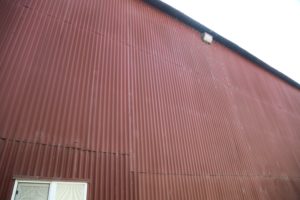









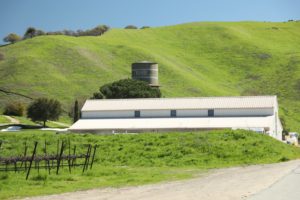





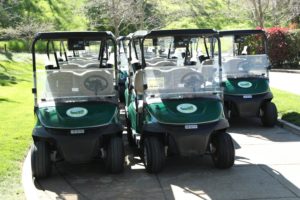
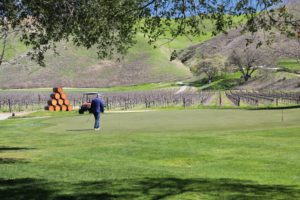










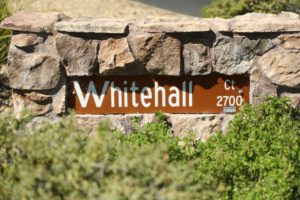
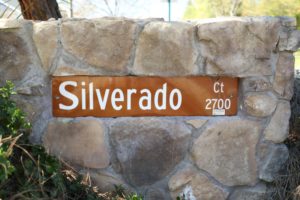


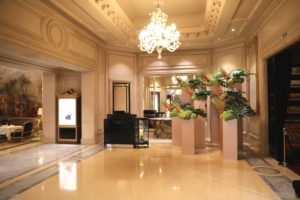






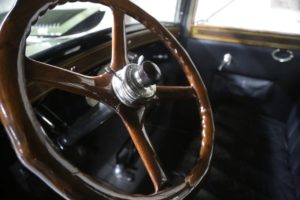









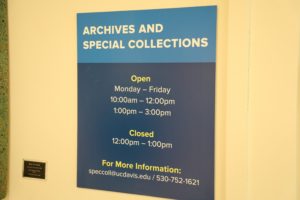



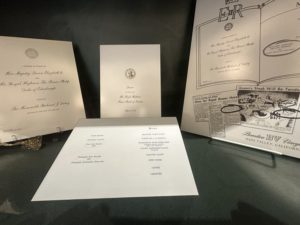
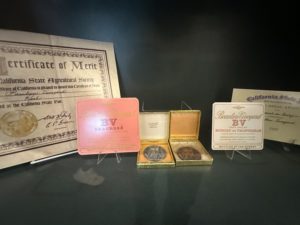

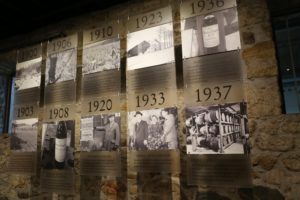












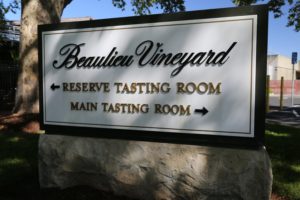










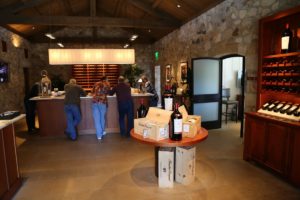
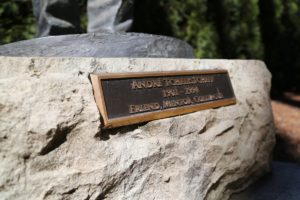
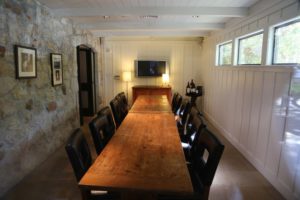










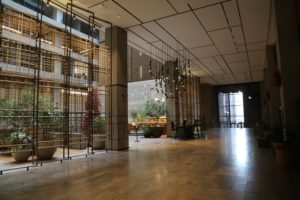
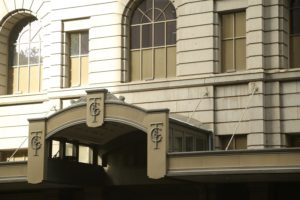


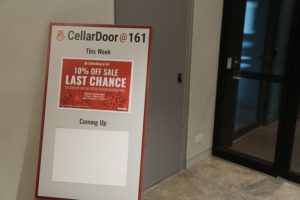




Leave a Reply